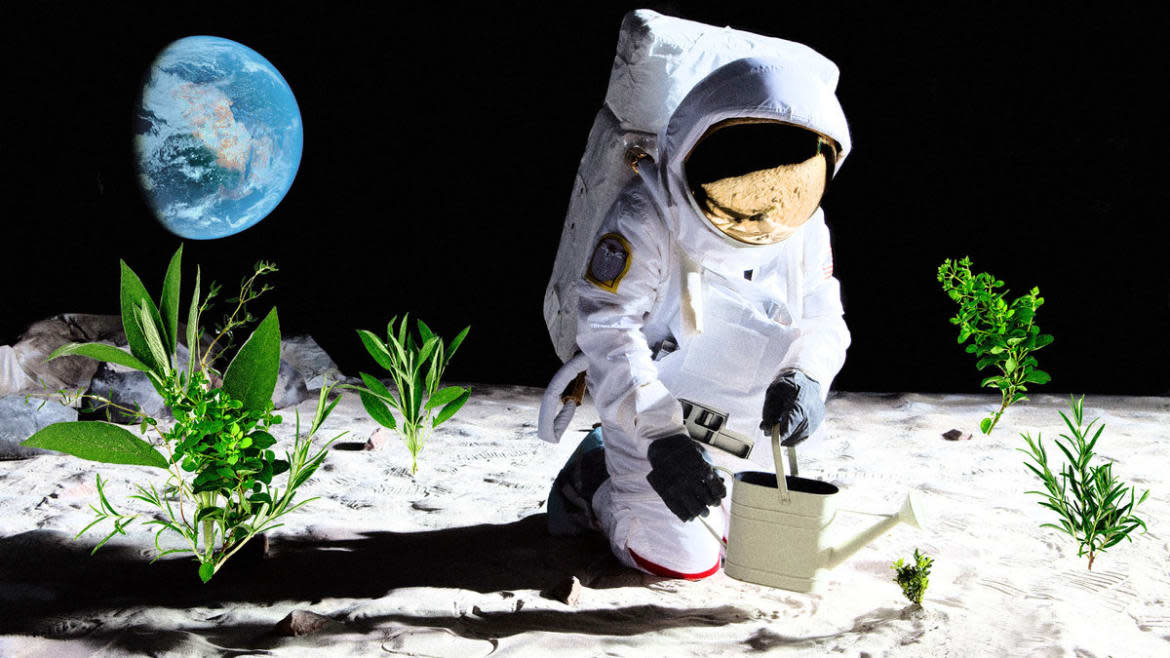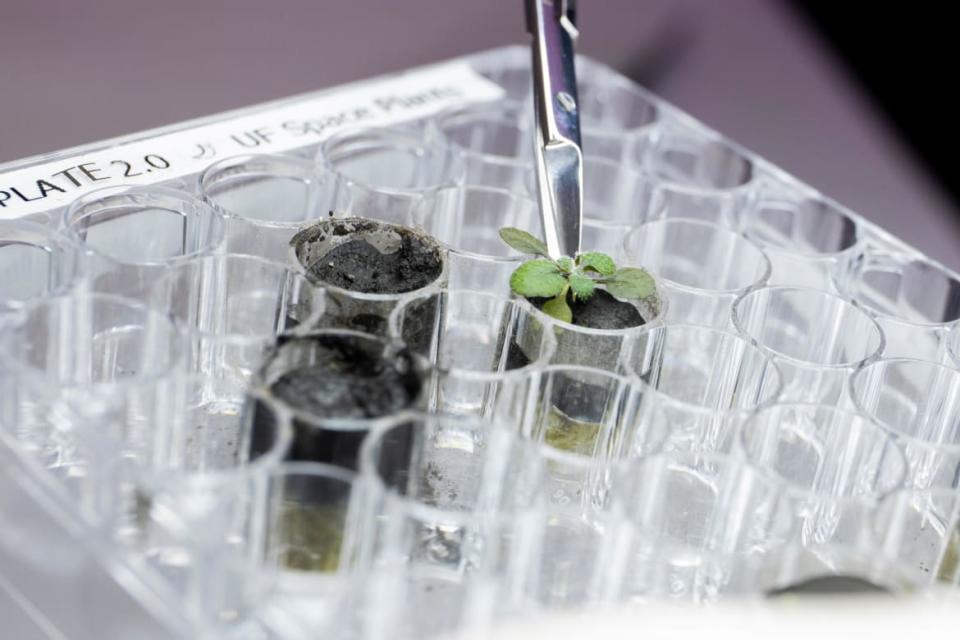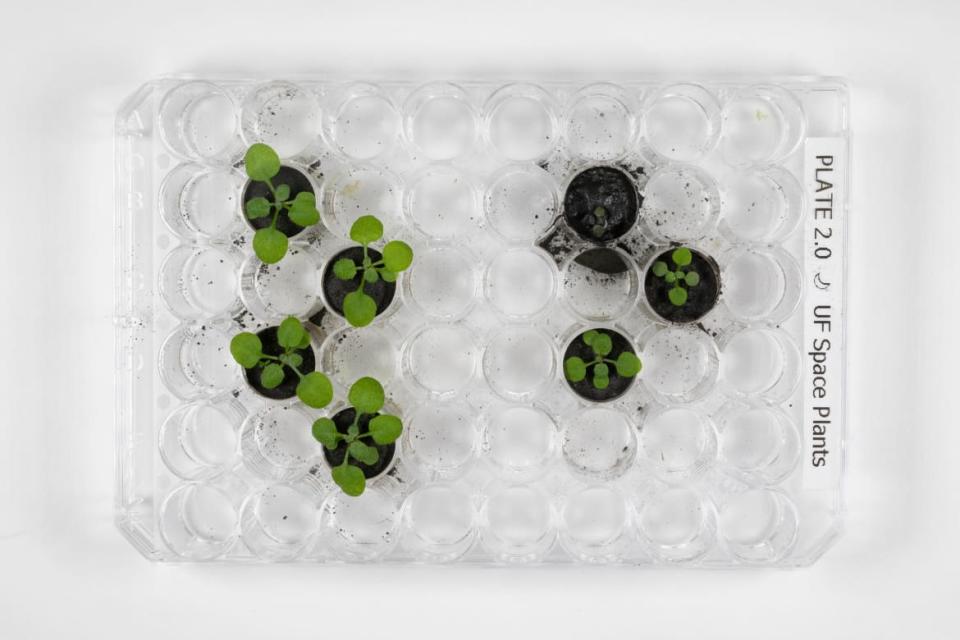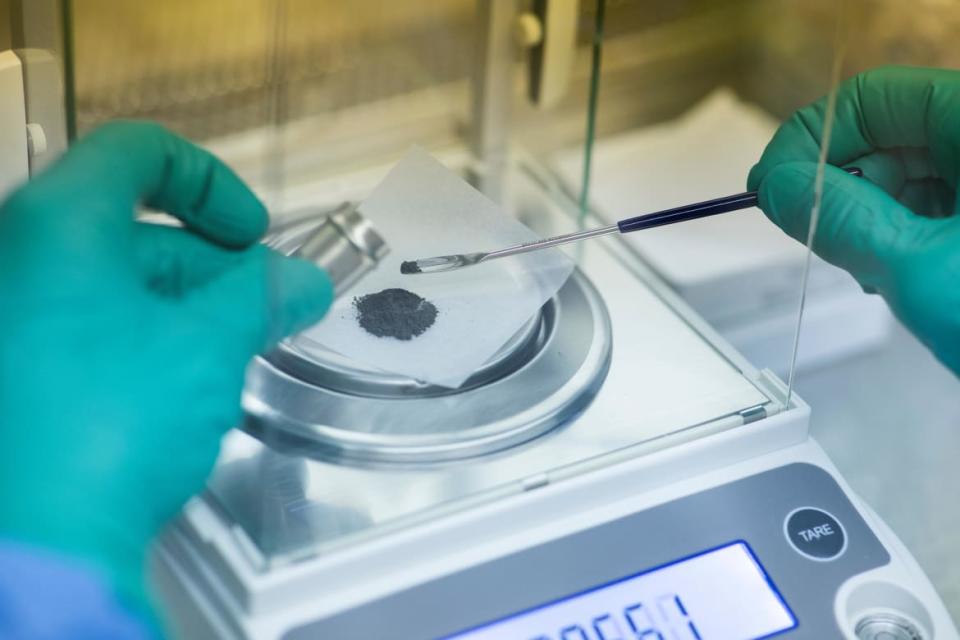Scientists Grew Plants in Lunar Soil for First Time Ever

One of the biggest hurdles that humans have to overcome before colonizing places like the moon or Mars is food—namely, how do we get it? If we ever expect to be a multi-planetary species, astronauts need to be able to grow and cultivate their own food sources.
Perhaps it might be easier than we think. In a study published in the journal Nature on Thursday, researchers at the University of Florida were able to successfully grow plants in lunar soil samples taken from the Apollo 11, 12, and 17 missions. The findings crucially show it’s possible to grow plants in lunar soil, and set the stage for a world of extraterrestrial agriculture that could keep future colonists fed on the moon.
“When humans move as a civilization, we always take our agriculture with us. We establish ourselves. That will be incredibly important on the moon,” Robert Ferl, professor of horticultural sciences at UF and lead author of the study, told reporters at a press conference earlier this week. He later added that growing food would be crucial to maintaining supplies and purifying the air.
“The idea of bringing lunar soil into a lunar greenhouse is the stuff of exploration dreams,” he said. “Not only can lunar soils not be pathogenic to terrestrial life, but terrestrial life can establish itself on it.”

Harvesting an thale cress plant growing in lunar soil.
That plant that the UF team grew specifically was the thale cress, a small flowering plant that’s often used as a part of studies in laboratory settings. There are already massive databases of past experiments revealing how thale cress grows and survives in different conditions, including on the International Space Station, Ferl said. As such, it was a good candidate to use for the lunar soil study.
The researchers planted thale cress in 12 different soil samples collected during three Apollo missions. As a point of comparison, the UF team also planted 16 samples in volcanic ash from Earth, which has a similar mineral composition to lunar soil.
The results were clear: Lunar soil is pretty bad at growing plants—but the plants could grow. The researchers discovered that despite germinating at the same rate, the thale cress in the lunar soil took root and grew at a much slower rate than those in the volcanic ash. Some of the moon samples also grew stunted and discolored.
“We found that plants do indeed grow in lunar regolith. However, they respond as if they’re growing in a stressful situation,” Anna-Lisa Paul, a research professor of horticultural sciences at UF and co-author of the study, told reporters at the press conference.

By day 16, there were clear physical differences between plants grown in the lunar simulant, left, compared with those grown in the lunar soil, right.
The team said that this is due to the fact that lunar soil is vastly different from the soil that plants typically grow. It doesn’t contain the same chemical, mineral, and physical properties as the dirt on Earth.
“The moon is very, very poor in water, carbon, nitrogen, and phosphorus. So naturally lunar soils don’t have a lot of nutrients that are needed to support plant growth,” Stephen M. Elardo, assistant professor of geology at UF and co-author of the study, told reporters at the press conference. “Additionally, their physical characteristics are terribly inhospitable. Lunar regolith is very fine grained in nature. It’s powdery… But in that powder, the fragments are actually quite sharp and angular.”
He added: “It’s not something you would want to breathe in. It would damage your lungs. You wouldn’t want to put it in your garden to grow your tomatoes. It’s not a benign substrate.”

Rob Ferl weighs lunar soil. The soil samples had been sealed in vials since the time of the Apollo 11, 12 and 17 missions to the Moon.
Interestingly, the team also found that the thale cress planted in the soil samples from the Apollo 11 mission—which were closer to the moon’s surface—grew worse than the thale cress planted in soil brought back in Apollo 12 and 17. This is because the soil was “exposed longer to the cosmic wind” thereby becoming even more toxic to plant growth, Paul explained. The researchers believe the parts of the moon that could be most hospitable to plant life are probably locations that had ancient lava flows—which are newer.
“Plants do quite well in areas where there is fresh material even if it’s volcanic in nature,” Elardo said. “Going to a younger site on the moon might present a more hospitable substrate without the need to drill or mine material from deep down.”
The team’s findings will no doubt play an integral role as NASA redoubles its efforts to explore and colonize the moon as part of the Artemis project. The more we can learn about how astronauts can leverage in situ lunar resources like soil, the more realistic it becomes to create a long-term colony off planet.
Got a tip? Send it to The Daily Beast here
Get the Daily Beast's biggest scoops and scandals delivered right to your inbox. Sign up now.
Stay informed and gain unlimited access to the Daily Beast's unmatched reporting. Subscribe now.

